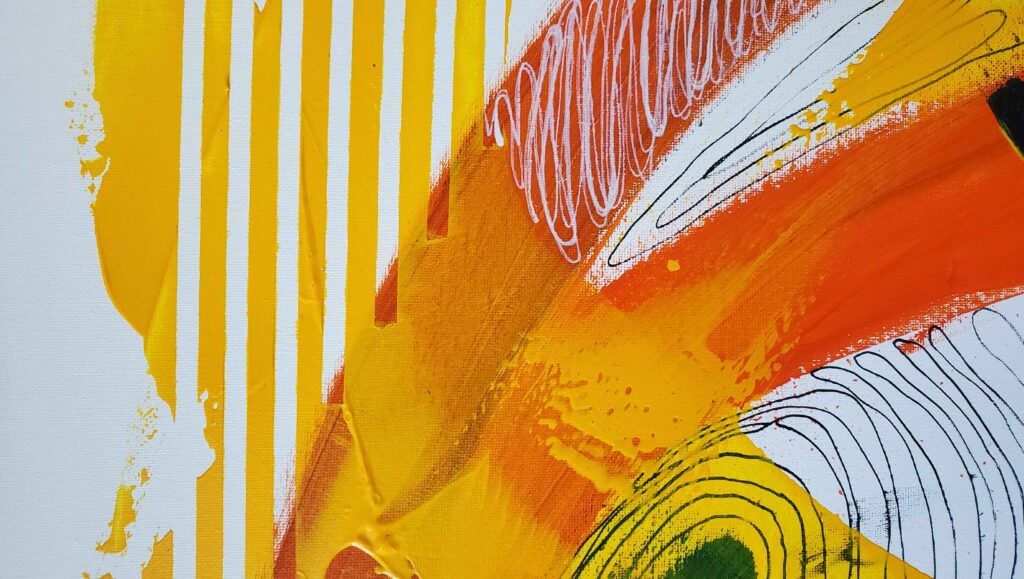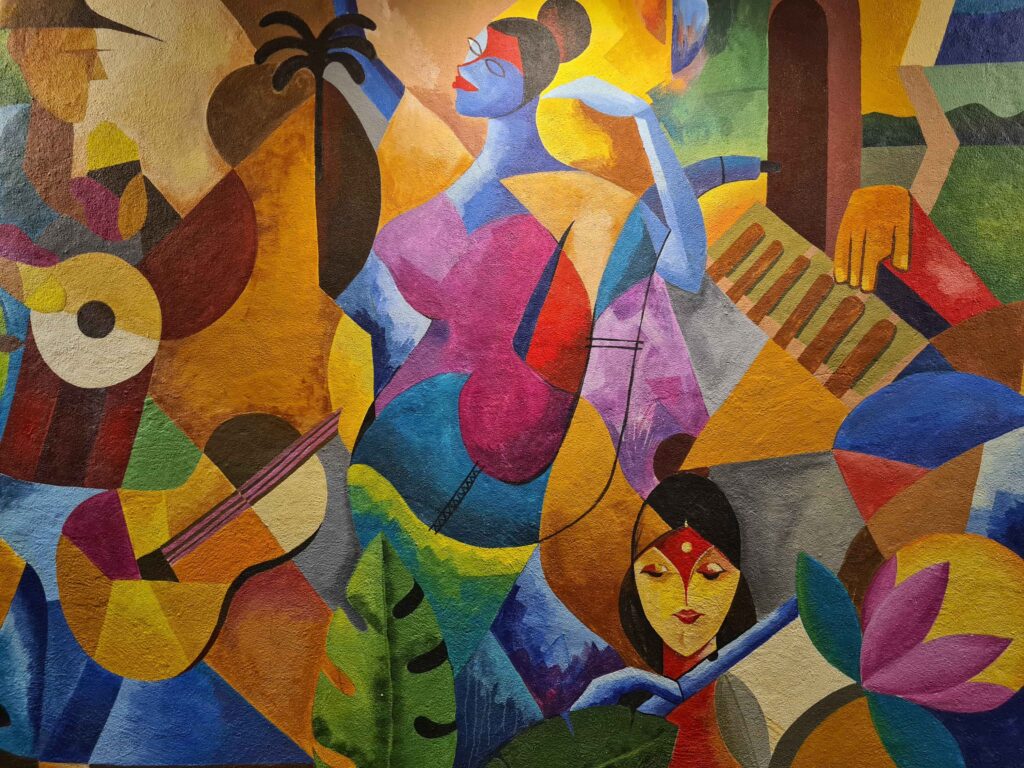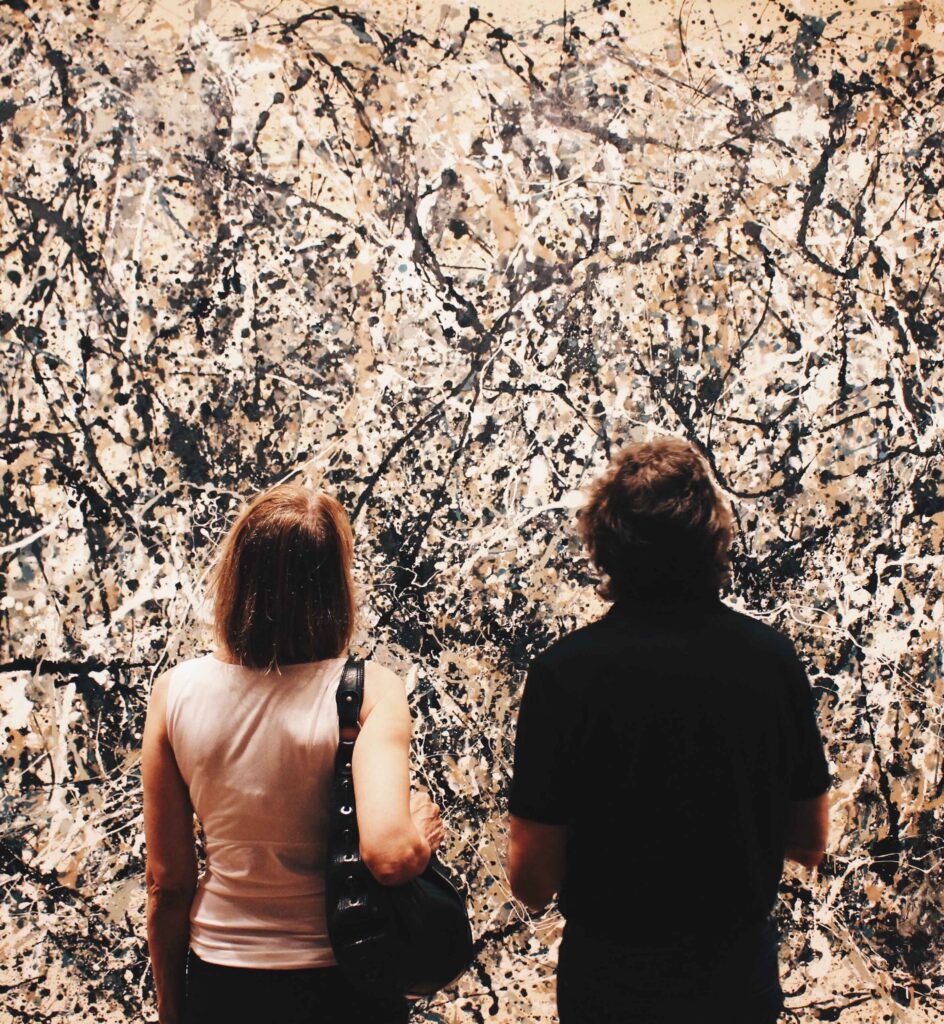Abstract Art is probably one of the most popular forms of artistic expression and if you have ever wondered why people love abstract art when it’s not the easiest to understand, this article is for you.
What is Abstract Art?
Abstract art is a form of artistic expression that emphasizes shapes, colors, and lines rather than realistic representations of the world. It is a visual language that communicates ideas, emotions, and experiences through the use of non-representational forms. Abstract art is one of the most revolutionary movements in the history of art, and it has had a profound impact on the way we perceive and experience the world.
But how do people see ideas and emotions in abstract art?
Here’s a sheer honest answer: they don’t 🙂
The interpretation of abstract art can vary greatly from person to person. Since abstract art does not depict recognizable objects or scenes, as a viewer, you must rely on your own experiences, emotions, and imagination to make sense of the work.
For some people, abstract art may evoke certain emotions or moods, such as joy, sadness, or tranquility. Others may see shapes, colors, and textures that remind them of specific objects or experiences. Experienced viewers with an artistic background may focus on the formal elements of the artwork, such as the composition, color balance, and texture, while others may be drawn to the overall mood or atmosphere of the piece.
Ultimately, the meaning of abstract art is subjective and open to interpretation. Artists may have intended a specific message or emotion, or they may have created the work purely for aesthetic reasons. It is up to each viewer to engage with the work and derive their own meaning from it.
Why do artists create abstract art?
Firstly, artists who practice abstract art do it because it allows them to explore their creativity without the pressure of creating a realistic representation of something. Abstract art is often more forgiving than representational art in terms of technical skill and accuracy, which can be reassuring for artists (beginners to be specific) who may feel intimidated by the idea of creating something that looks “real.”
Additionally, abstract art offers a lot of freedom and allows artists to experiment with different materials, techniques, and approaches. This can be very liberating and can help artists to discover their own personal style and voice.
Another reason why artists may enjoy abstract art is that it can be highly expressive and emotional. Abstract art often relies on color, shape, and form to convey emotions and ideas, which can be a powerful and intuitive way for beginners to express themselves.
Finally, abstract art is often seen as more contemporary and cutting-edge than traditional representational art, which can be appealing to beginners who are interested in exploring the latest trends and techniques in the art world. Overall, abstract art offers art amateurs a lot of opportunities for exploration, experimentation, and self-expression, which can be very exciting and fulfilling.
Why do people love abstract art when it’s not the easiest to understand?
Take a look at the history of art, abstract art can be traced back to the late 19th and early 20th centuries, with the rise of modernism and the rejection of traditional representational art. When abstract art was founded by artists like Wassily Kandinsky, Kazimir Malevich, and Piet Mondrian, traditional art, with its emphasis on realism and naturalism, seemed no longer capable of capturing the complexities of modern life. Therefore, people love abstract art because it reflects a rejection of traditional representational techniques. Instead of depicting recognizable objects and figures, abstract art seeks to create a visual language that is entirely its own. Artists are then using shapes, colors, and lines to create compositions that are both visually striking and emotionally resonant.
Another reason must be the emphasis that abstract art is putting on the viewer’s experience. Because abstract art does not represent the world in a literal way, it relies on the viewer’s interpretation and perception. As a viewer, you bring your own experiences and emotions to the artwork, and your response to the work is often deeply personal.
One of the most famous examples of abstract art is Jackson Pollock’s drip paintings. Pollock’s works are characterized by their energetic, gestural brushstrokes and splatters of paint. These paintings are not meant to represent any specific objects or figures, but rather to convey a sense of movement, energy, and emotion. Pollock’s drip paintings are a powerful example of the way abstract art can communicate on a deeply emotional level.
Conclusion
I am personally not a huge abstract art fan. However, today, abstract art continues to be a vital and important form of artistic expression. It is a medium that allows artists to explore new ideas and experiment with different techniques and styles.




2 Comments